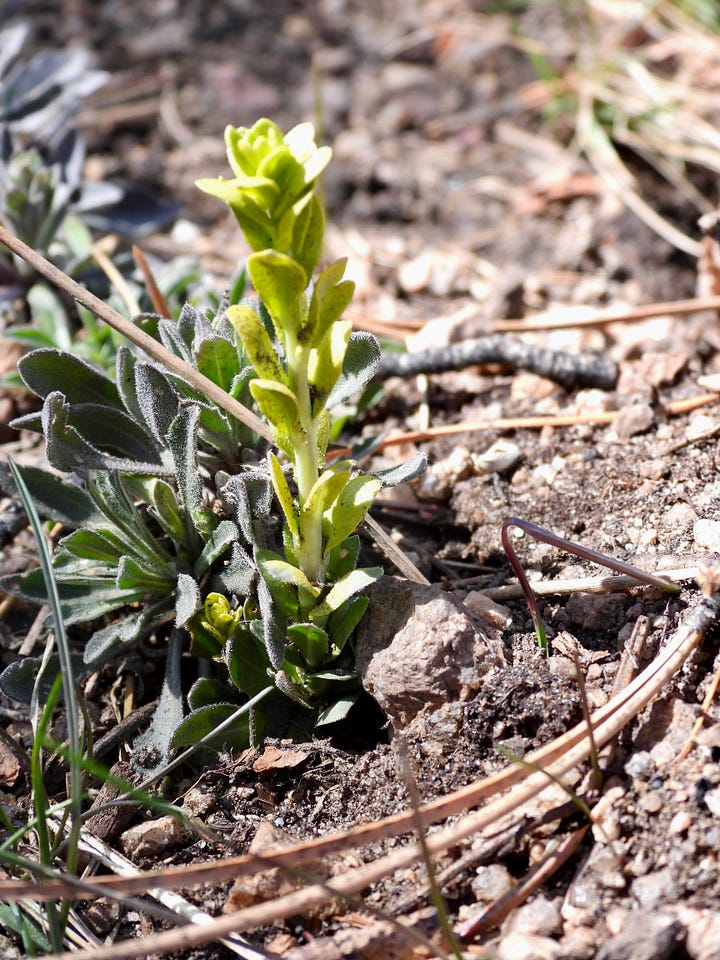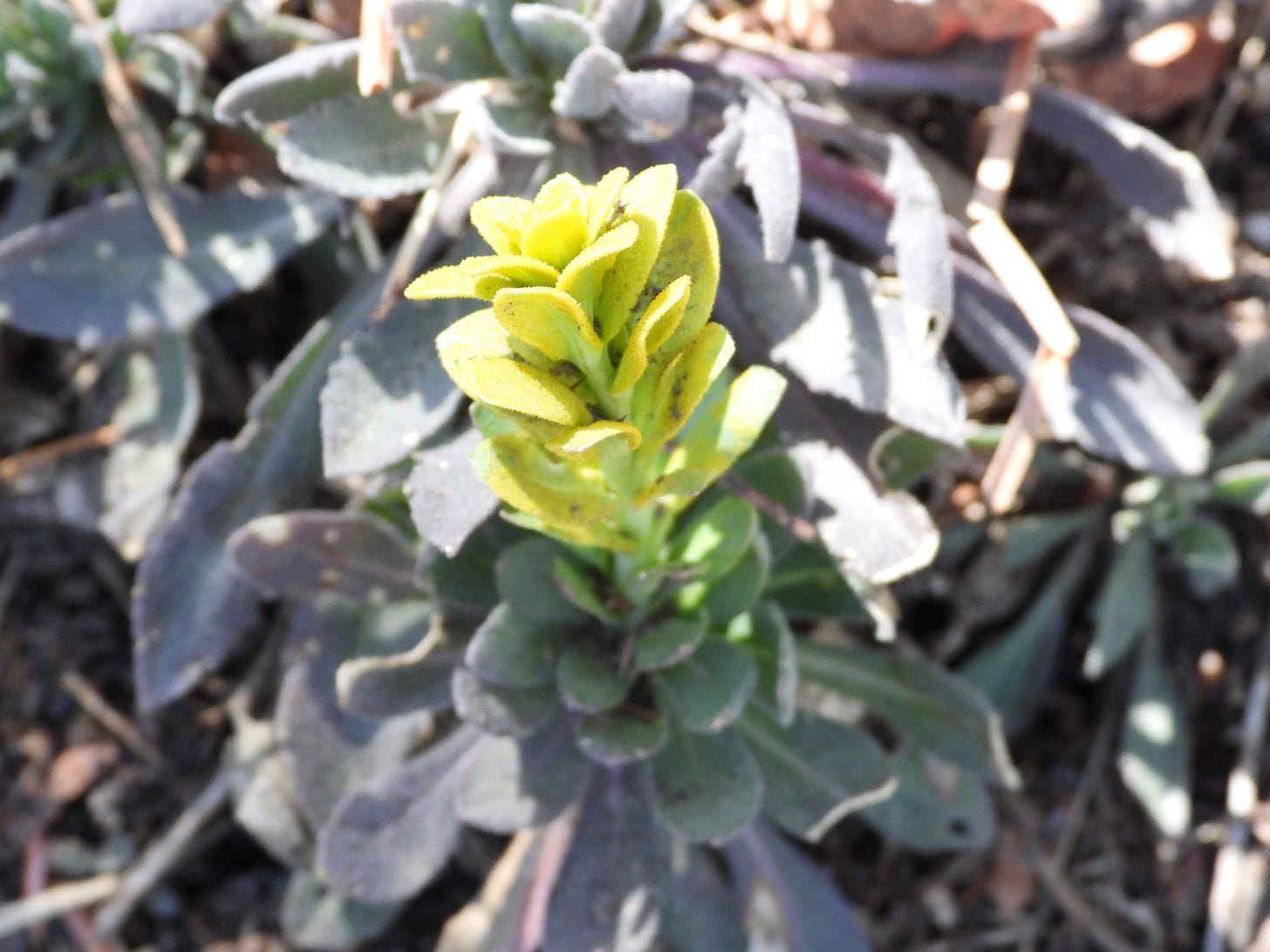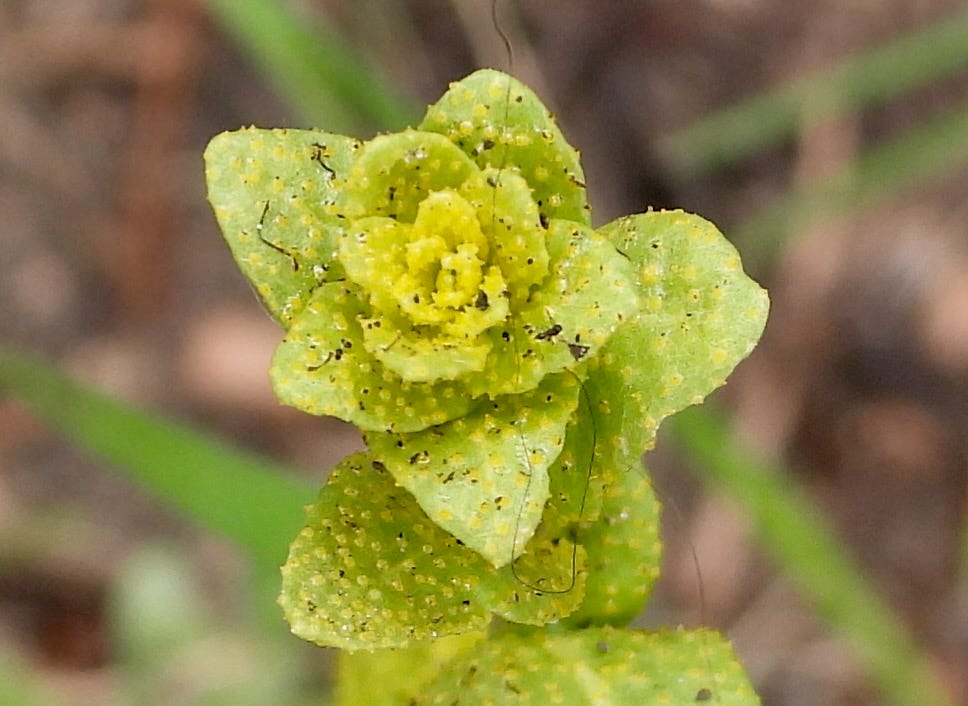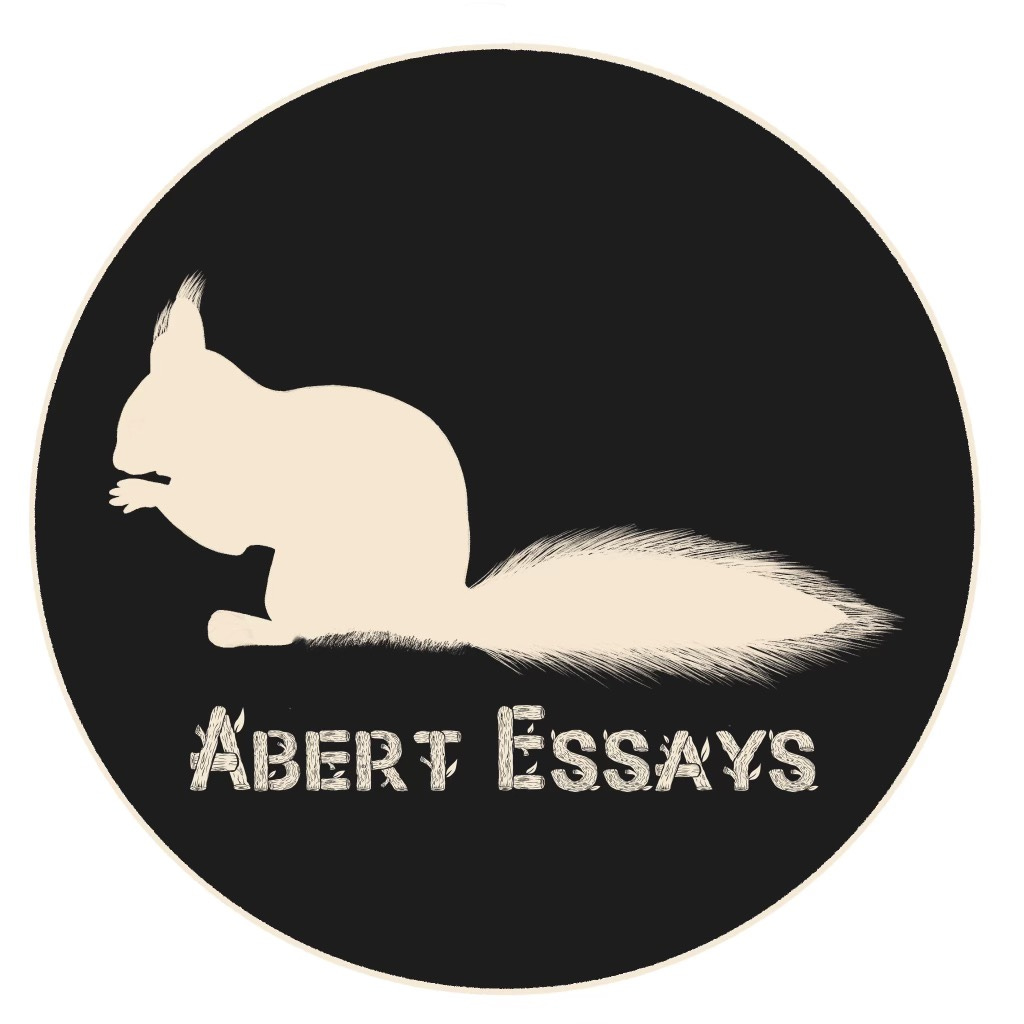Personal note: Spring has brought with it very busy days with multiple projects. I’ve had this piece waiting, mostly written, for far too long. I’ve also shipped off my personal editor on a study abroad May-mester, so, while I have run it through my writer’s group, you’ll be stuck with my own editing on this one. Please be kind. ;)
Mid-April, at nearly 9000 feet, is still holding on to chilly temps, winds, and snow patches. There isn’t much greenery coming alive quite yet, but hints are poking through. I’m wandering about, looking for a plant that has grown sufficiently enough to work through the identification process a part of a research portion of Colorado State University’s Naturalist course that I am currently taking. I am looking for a patch of Pennycress, one of the earliest wildflowers to bloom. Heading to where it can be commonly found by the pond, my eye catches something else though, better to work with something I don’t know yet.
Taking pictures, I begin the process of noting flower color; the petals, number, shape, and arrangement; and leaf shape, and arrangement. This seems to be something different, though. Using books first and then the Colorado Wildflowers app, I enter what I’m seeing, hoping to drill down to an approximate identification, and I’m finding nothing. Of course, I have found something outside the norm. So, now, it’s time to cheat.
Entering the picture into iNaturalist, the top app for recording all things natural, it comes up with a 99.3% confidence that I am looking at Mustard Flower Rust (Puccinia monoica), a fungus.
Accepting the iNaturalist identification, I’m now hooked to find out just what I’m looking at. Down the rabbit hole of research I go, and it turns out, other folks have had a similar discovery process when encountering this species. See the sources below from the Tahoe Trail Guide, and a University of Colorado-Boulder professor.


Mustard Flower Rust isn’t a flower, therefore not findable with the wildflower reference guides. It’s a fungus that forces a plant to create a pseudo-flower for its purposes, so, it is a parasite. Found broadly in the American West, this fungus rewrites the genetic code of its host plant’s growth and reproductive process to do the bidding of the fungus. What I am looking at in this small green flowery thing is a sneaky little deceiver.
Traveling via wind and pollinators, the fungus tends to prefer the cress plants of the mustard family (Brassicaceae). Arriving at this preferred plant, the fungus gets into the stem and steals nutrients. The next phase of the takeover sterilizes the host plant, removing its ability to reproduce, and begins to rewrite the reproductive process. The host plant is forced to grow bright, greenish-yellow ‘flower petals’ from the leaves, tightly revolving around a single stem. This floral-mimic produces a version of nectar high in sugar content and very attractive to pollinators. The deception has the add-on of coloring that extends into the UV light realm, readily seen by passing insects. It’s a false front sweet shop, complete with the right smells for pollinators hungry in the early spring, with few other feeding options.
So, the reproductive process gets underway, but the pollinators are carrying the spores of the fungus to other mustard plants rather than pollen. The rust has ensured its own survival for another generation. The next phase, I’ll let Matt Candeias of In Defense of Plants explain the rest:
At this point, the pseudoflowers stop producing color and nectar, and instead, the fused sex cells germinate into hyphae that begin to form specialized structures called "aecia." The aecia house the spores that will be responsible for infecting their secondary host plants, which are grasses. Spores blow about on the wind and, with a little luck, a few will land on a blade of grass. The spores germinate and infect the grass. From there, structures called "uredia" are formed that go on to produce even more spores to infect even more grass. Eventually, structures called "telia" are formed on the grass and the cycle finally comes full circle. The telia produce the spores that will go on to infect the original mustard host plants.
So, the next question is, aren’t parasites bad? Well, that depends. ‘One who eats at the table of another’ is the meaning of the Greek word ‘parasitos’. The Mustard Flower Rust was first documented by a mycologist back in 1879. Parasitism is all about survival and is incredibly prevalent on planet Earth in all life forms. Parasitism uniquely harms or alters the host. The mere thought of parasites give our modern, western mentalities the heebie-jeebies when thinking of fungus and creepy crawlies though.
The more parasitic interactions are studied, the more scientists are seeing broader ecological effects on populations, biodiversity, food webs, competition, predator/prey relationships, communities, and disease emergence. Not all are bad, many are beneficial in the larger scope of things, and often the range of affect is very limited. I have noted that the infection of the Mustard Flower Rust is a very small number of the Cress plants, the other Pennycress are surviving just fine. If you see this on your property, leaving the Mustard Flower Rust infected plant alone is the best course of action.
The study and reality of ecology is not always cute fox kit faces and Columbines. Most of the function of life is happening in the very small things. Everything has its place, and every living thing is striving for survival and reproduction. Survival depends on interdependencies among species. The more we see, the more we realize we need to study more. Yay, science!
Parasitic control ranges widely among species, from the relatively harmless gall production by wooly aphids to castration and complete control by Puccinia monoica. I am somewhat humbled (galled but by no means castrated) by being fooled by a fungus, but at least I am in the good company of a horde of clever pollinators. - Jeff Mitton, professor in the Department of Ecology and Evolutionary Biology at the University of Colorado
The Abert Essays is reader supported. Welcome to all my free subscribers, and if you wish to further support this writing, please consider upgrading to a paid subscription. Thank you!
Sources:
- https://www.colorado.edu/asmagazine-archive/node/1785
- https://en.wikipedia.org/wiki/Puccinia_monoica
- https://tahoetrailguide.com/discovering-something-sinister-afoot-while-searching-for-sierra-nevada-wildflowers-at-lake-tahoe/
- https://www.inaturalist.org/guide_taxa/1045489
- https://en.wikipedia.org/wiki/Puccinia_monoica
- https://www.nature.com/scitable/knowledge/library/ecological-consequences-of-parasitism-13255694/
- https://www.indefenseofplants.com/blog/2015/5/4/rusty-mustards
- https://plantsandrocks.blogspot.com/2017/04/pseudoflowerstrick-or-treat.html
📷 All photos are credited: The Abert Essays unless otherwise noted.
📱 Join me on my Facebook page, Substack Notes, and my new BlueSky page. I post smaller ‘Encounters’ posts there as I see flowers, animals, weather patterns, and anything else that catches my eye.







